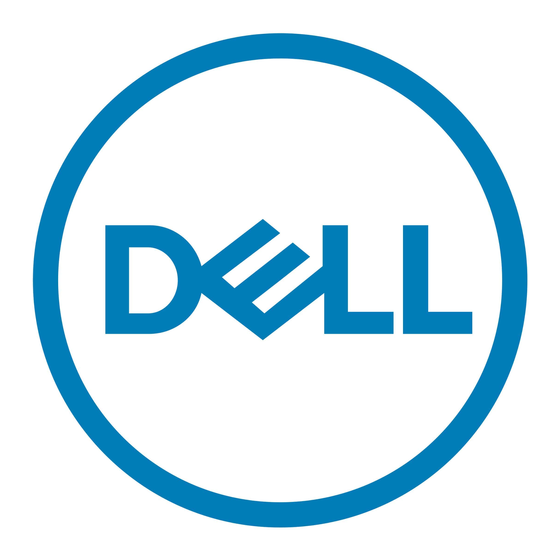Dell DX6000G Manuale di installazione e configurazione - Pagina 9
Sfoglia online o scarica il pdf Manuale di installazione e configurazione per Server Dell DX6000G. Dell DX6000G 23. Rack installation instructions — static rails
Anche per Dell DX6000G: Manuale d'uso (48 pagine), Note di rilascio (7 pagine), Installazione del rack (2 pagine), Installazione del rack (2 pagine)

Note
The name space must remain online at all times to ensure CFS can obtain the needed
file system information. If CFS cannot connect to the name space, it will start throwing
permission denied errors and block new file writes.
2.2.3. Configuring DX Storage CFS and its Mountpoints
After installing the DX Storage CFS server and creating the name space via cns-admin, you will
need to configure a mountpoint, logging and DX Storage cluster information. You can initiate the
configuration process by running the following command as the root user:
# cfs-admin mkfs --add
This will prompt you for the minimum required parameters needed to run DX Storage CFS. Most
fields have a default value with the exception of fields that require your input which will be blank. A
description of each of the configuration prompts is included below. To stop the configuration process
at any time, use Ctrl-C; no configuration files will be created until the utility completes successfully.
The utility can be run multiple times if you are creating multiple DX Storage CFS mountpoints. Each
mountpoint must have its own unique name, configuration file and spooler partition. All created
configuration files will be located in: /opt/caringo/fabric/etc/<mountid>.conf. Manual editing of this file
is not recommended unless under direct advice from your technical support contact.
1.
ID to be used for this mount. Enter a name for the mountpoint. It must be unique on each
server and consist of letters and numbers without punctuation or spaces. For example:
"acctShare" or "archiveFS".
2.
Mount directory path. Enter the location of the mountpoint. By default, the utility will use
the previously provided mount ID in the /mnt directory. Spaces in mountpoint paths are not
supported.
3.
Spooler directory path. Enter the location where the spooler/cache directory will reside. The
location must be unique for each distinct read/write mount ID or the filesystem mount will fail.
By default, the installer will use the previously provided mount ID in the /var/spool/cfs directory.
Extended attributes must be enabled on the specified spooler partition to store the lifepoints
and custom and system metadata associated with each unspooled item.
Warning
A dedicated spooler partition is required for each share to ensure space monitoring is
accurate and the local cache is properly maintained.
4.
Mount on boot. This determines whether or not this DX Storage CFS file system should be
mounted automatically when the server reboots. The default and recommended value is Yes.
5.
Mount read-only. This value determines whether or not this DX Storage CFS file system
should be mounted in read-only mode. The default value is No.
6.
Log facility. Enter the logging facility to use. The default value is syslog.
a.
Log filename. If the file logging facility was selected, enter the filename and location of the
logfile. By default the installer will use a <mountid>.log file in the /var/log/caringo directory.
With file logging, default log rotation will be configured to keep up to 8 log files, rotating
weekly or at a max file size of 512 MB.
Copyright © 2011 Caringo, Inc.
All rights reserved
6
Version 2.6
February 2011
